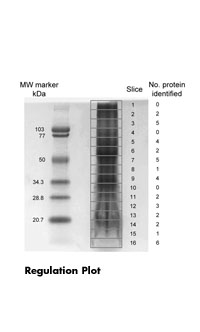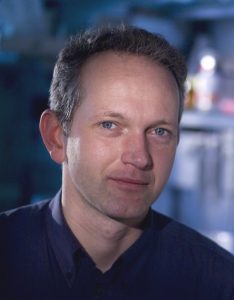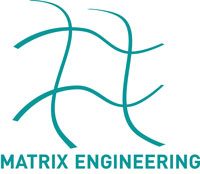
Z4 – Proteomik-Plattform zur Analyse von Matrix-induzierten Effekten in in vivo- und in vitro-Modellen
Das Teilprojektes Z4 stellt als Serviceleistung die essenzielle Technologieplattformen für Proteomik zur qualitativen und quantitativen Analyse von Proteinen aus zellulären Testsystemen und Tiermodellen zur Verfügung. Diese Technologien werden insbesondere benötigt zur Analytik von Zellen, Zellkulturüberständen bzw. Mikrodialysaten. Daneben wird die analytische Kompetenz von allen matrixherstellenden Teilprojekten genutzt.
- Die Identifizierung und Quantifizierung von Proteinen, welche mittels Mikrodialyse aus verletztem Gewebe während des Wundheilungsprozesses extrahiert wurden, mittels nano-HPLC/nano-ESI-Massenspektrometrie
- Proteinexpressionsanalyse aus Zellmodellen
- Anreicherung und Bestimmung von Glykosylierungen
- Proteintrennung mittels 1D/2D-SDS-PAGE oder HPLC (Größenausschlusschromatographie, C4-Umkehrphasenchromatographie)
- Durchführung von Schulungen/Einführung von TRR67-MitarbeiterInnen.

Publikationen
- Großkopf H, Vogel S, Müller CD, Köhling S, Dürig JN, Möller S, Schnabelrauch M, Rademann J, Hempel U, von Bergen M, Schubert K. Identification of intracellular glycosaminoglycan-interacting proteins by affinity purification mass spectrometry. Biological Chemistry, vol. 402, no. 11, 2021, pp. 1427-1440. https://doi.org/10.1515/hsz-2021-0167.
- Kratochvil I, Hofmann T, Rother S, Schlichting R, Moretti R, Scharnweber D, Hintze V, Escher BI, Meiler J, Kalkhof S, von Bergen M. Mono(2-ethylhexyl) phthalate (MEHP) and mono(2-ethyl-5-oxohexyl) phthalate (MEOHP) but not di(2-ethylhexyl) phthalate (DEHP) bind productively to the peroxisome proliferator-activated receptor γ. Rapid Commun Mass Spectrom. 2019 May;33 Suppl 1:75-85. doi: 10.1002/rcm.8258. Epub 2019 Jan 1.
- Schmidt JR, Vogel S, Moeller S, Kalkhof S, Schubert K, von Bergen M, Hempel U. Sulfated hyaluronic acid and dexamethasone possess a synergistic potential in the differentiation of osteoblasts from human bone marrow stromal cells. J Cell Biochem 2019;120:8706-8722. doi:10.1002/jcb.28158
- Jouy F, Lohmann N, Wandel E, Ruiz-Gómez G, Pisabarro MT, Beck-Sickinger AG, Schnabelrauch M, Moeller S, Simon JC, Kalkhof S, von Bergen M, Franz S. Sulfated hyaluronan attenuates inflammatory signaling pathways in macrophages involving induction of antioxidants. Proteomics. 2017. [Epub ahead of print]
- Förster Y, Schmidt JR, Wissenbach DK, Pfeiffer SE, Baumann S, Hofbauer LC, von Bergen M, Kalkhof S, Rammelt S. Microdialysis Sampling from Wound Fluids Enables Quantitative Assessment of Cytokines, Proteins, and Metabolites Reveals Bone Defect-Specific Molecular Profiles. PLoS One. 2016;11:e0159580.
- Rother S, Samsonov SA, Hofmann T, Blaszkiewicz J, Kohling S, Moeller S, Schnabelrauch M, Rademann J, Kalkhof S, von Bergen M, Pisabarro MT, Scharnweber D, Hintze V. Structural and functional insights into the interaction of sulfated glycosaminoglycans with tissue inhibitor of metalloproteinase-3 – a possible regulatory role on extracellular matrix homeostasis. Acta Biomater. 2016; 45:143-54.
- Kalkhof S, Schildbach S, Blumert C, Horn F, von Bergen M, Labudde D. PIPINO: A Software Package to Facilitate the Identification of Protein-Protein Interactions from Affinity Puri-fication Mass Spectrometry Data. Biomed Res Int. 2016;2016:2891918
- Wewering F, Jouy F, Wissenbach DK, Gebauer S, Blüher M, Gebhardt R, Pirow R, von Bergen M, Kalkhof S, Luch A, Zellmer S. Characterization of chemical-induced sterile inflamma-tion in vitro: application of the model compound ketoconazole in a human hepatic co-culture system. Arch Toxicol. 2016. [Epub ahead of print]
- Schmidt JR, Kliemt S, Preissler C, Moeller S, von Bergen M, Hempel U, Kalkhof S. Osteoblast-released Matrix Vesicles, Regulation of Activity and Composition by Sulfa¬ted and Non-sulfated Glycosaminoglycans. Mol Cell Proteomics. 2016;15:558-72.
- Jouy F, Müller SA, Wagner J, Otto W, von Bergen M, Tomm JM. Integration of conventional quantitative and phospho-proteomics reveals new elements in activated Jurkat T-cell receptor pathway maintenance. Proteomics. 2015;15:25-33.
- Hofmann T, Fischer AW, Meiler J, Kalkhof S. Protein structure prediction guided by crosslinking restraints – A systematic evaluation of the impact of the crosslinking spacer length. Methods. 2015; pii: S1046-2023(15)00207-8.
- Hofmann T, Samsonov SA, Pichert A, Lemmnitzer K, Schiller J, Huster D, Pisabarro MT, von Bergen M, Kalkhof S. Structural analysis of the interleukin-8/glycosaminoglycan interactions by amide hydrogen/deuterium exchange mass spectrometry. Methods. 2015 2015;1:45-53.
- Jouy F, Müller SA, Wagner J, Otto W, von Bergen M, Tomm JM. Integration of conventional quantitative and phospho-proteomics reveals new elements in activated Jurkat T-cell receptor pathway maintenance. Proteomics. 2015; 15(1):25-33
- Kalkhof S, Förster Y, Schmidt J, Schulz MC, Baumann S, Weißflog A, Gao W, Hempel U, Eckelt U, Rammelt S, von Bergen M. Proteomics and metabolomics for in situ monitoring of wound healing. Biomed Res Int. 2014:934848.
- Blumert C, Kalkhof S, Brocke-Heidrich K, Kohajda T, von Bergen M, Horn F. Analysis of the STAT3 interactome using in-situ biotinylation and SILAC. J Proteomics. 2013 6:370-86.
- Kliemt S, Lange C, Otto W, Hintze V, Möller S, von Bergen M, Hempel U, Kalkhof S. Sulfated hyaluronan containing collagen matrices enhance cell-matrix-interaction, endocytosis, and osteogenic differentiation of human mesenchymal stromal cells. J Proteome Res. 2013;12:378-89.
- Möbius K, Nordsieck K, Pichert A, Samsonsov SA, Thomas L, Schiller J, Kalkhof S, Pisabarro MT, Beck-Sickinger AG, Huster D. Investigation of lysine side chain interactions of interleukin-8 with heparin and other glycosaminoglycans studied by a methylation-NMR approach. Glycobiology. 2013;23:1260-9.
- Müller SA, van der Smissen A, von Feilitzsch M, Anderegg U, Kalkhof S, von Bergen M. Quantitative proteomics reveals altered expression of extracellular matrix related of proteins of human primary dermal fibroblasts in response to sulphated hyaluronan and collagen applied as artificial extracellular matrix. J Mater Sci Mater Med. 2012;23:3053-65.
- Salbach J, Kliemt S, Rauner M, Rachner TD, Goettsch C, Kalkhof S, von Bergen M, Möller S, Schnabelrauch M, Hintze V, Scharnweber D, Hofbauer LC. The effect of the degree of sulfation of glycosaminoglycans on osteoclast function and signaling pathways. Biomaterials. 2012;33:8418-29.
- Goettsch C, Kliemt S, Sinnigen K, von Bergen M, Hofbauer LC, Kalkhof S. Quantitative proteomics reveals novel functions of osteoclast-associated receptor in STAT signaling and cell adhesion in human endothelial cells. J Mol Cell Cardiol. 2012;53:829-37.
- Abburi R, Kalkhof S, Oehme R, Kiontke A, Birkemeyer C. Artificats in amine analsis from anodic oxidation of organic solvents upon electrospray ionization for mass spectrometry. Eur J Mass Spectrom. 2012;18:301-12.
- Dautel F, Kalkhof S, Trump S, Michaelson J, Beyer A, Lehmann I, von Bergen M. DIGE based protein expression analysis of B[a]P-exposed hepatoma cells reveals a complex stress response including alterations in oxidative stress, cell cycle control, and cytoskeleton motility at toxic and subacute concentrations. J Proteome Res. 2011;10:379-93.
- Washietl S, Findeiss S, Müller SA, Kalkhof S, von Bergen M, Hofacker IL, Stadler PF, Goldman N. RNAcode: robust discrimination of coding and noncoding regions in comparative sequence data. RNA. 2011;17:578-94.
- Rockstroh M, Müller SA, Jende C, Kerzhner A, von Bergen M, Tomm JM. Cell frationation – an important tool for compartment proteomics. J Integr OMICS. 2011;1:135-43.
- Müller SA, Kohajda T, Findeiß S, Stadler PF, Washietl S, Kellis M, von Bergen M, Kalkhof S. Optimization of parameters for coverage of low molecular weight proteins. Anal Bioanal Chem. 2010;398:2867-81.
- Mörbt N, Mögel I, Kalkhof S, Feltens R, Röder-Stolinski C, Zheng J, Vogt C, Lehmann I, von Bergen M. Proteome changes in human bronchoalveolar cells following styrene exposure indicate involvement of oxidative stress in the molecular-response mechanism. Proteomics. 2009;21:4920-4933.
Kontakt

Prof. Dr. Martin von Bergen
Professor für Funktionale Proteomics
Helmholtz-Institut für Umweltforschung
Department Molekulare Systembiologie
Permoserstraße 15, 04318 Leipzig
Telefon: +49 (0)341 235-1211
E-Mail: martin.vonbergen@ufz.de
Homepage: www.ufz.de/index.php?de=17634
